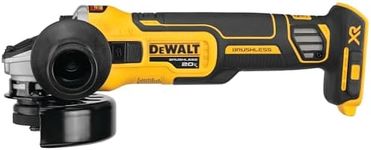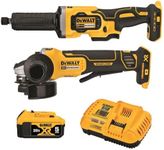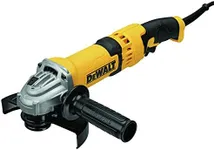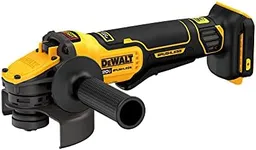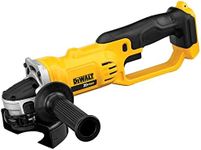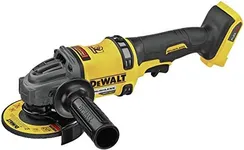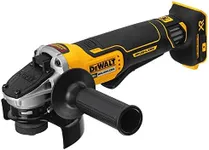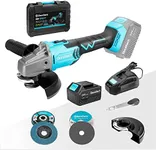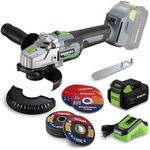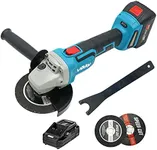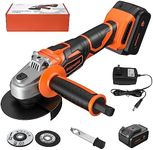Buying Guide for the Best Dewalt Grinders
When choosing a DeWalt grinder, it's important to consider the specific tasks you plan to use it for. Grinders are versatile tools that can be used for cutting, grinding, polishing, and more. Understanding the key specifications will help you select the best model for your needs. Here are the main specs to consider and how to navigate them.Power SourceGrinders can be powered by electricity (corded) or batteries (cordless). Corded grinders are typically more powerful and are ideal for heavy-duty tasks that require continuous power. Cordless grinders offer more flexibility and portability, making them suitable for jobs where mobility is important. Choose a corded grinder if you need consistent power for long periods, and a cordless one if you need to move around a lot or work in areas without easy access to power outlets.
Motor PowerMotor power is measured in amps for corded grinders and volts for cordless ones. Higher motor power means the grinder can handle tougher materials and more demanding tasks. For light to medium tasks like sharpening tools or cutting small pieces of metal, a grinder with lower motor power (around 6-8 amps or 18-20 volts) is sufficient. For heavy-duty tasks like cutting thick metal or concrete, look for a grinder with higher motor power (10 amps or more, or 20+ volts).
Disc SizeThe disc size determines the depth of cut and the surface area that can be worked on. Common disc sizes are 4.5 inches, 5 inches, and 7 inches. Smaller discs (4.5-5 inches) are suitable for precision work and smaller projects, while larger discs (7 inches) are better for heavy-duty tasks and larger surfaces. Choose a disc size based on the type of work you plan to do; smaller discs for detailed work and larger discs for more extensive cutting and grinding.
Speed (RPM)The speed of a grinder is measured in revolutions per minute (RPM). Higher RPMs mean the grinder can cut or grind faster. For general-purpose grinding and cutting, a speed of around 8,000-10,000 RPM is adequate. For more specialized tasks that require precision and control, such as polishing or working with delicate materials, a lower speed may be preferable. Some grinders come with variable speed settings, allowing you to adjust the speed based on the task at hand.
Weight and ErgonomicsThe weight and design of the grinder affect how comfortable it is to use, especially for extended periods. Lighter grinders are easier to handle and reduce fatigue, making them suitable for tasks that require precision and control. Heavier grinders are more stable and can handle more demanding tasks but may be tiring to use for long periods. Consider the balance between weight and power, and look for features like ergonomic handles and vibration reduction to enhance comfort.
Safety FeaturesSafety features are crucial when working with grinders, as they can help prevent accidents and injuries. Look for grinders with features like a safety guard to protect against debris, a spindle lock for easy disc changes, and an automatic shut-off to prevent overheating. Some models also have anti-kickback features to reduce the risk of the tool jerking suddenly. Prioritize safety features that match the type of work you will be doing and the environments in which you will be working.
